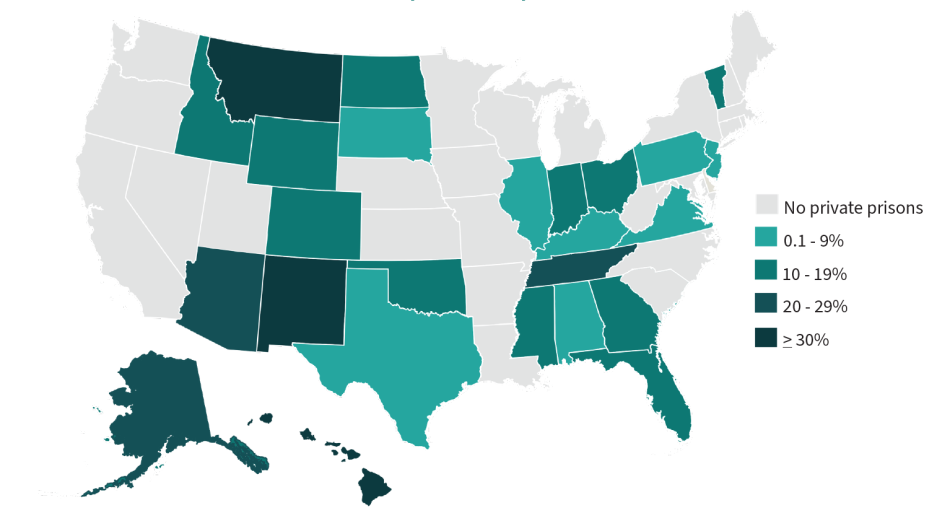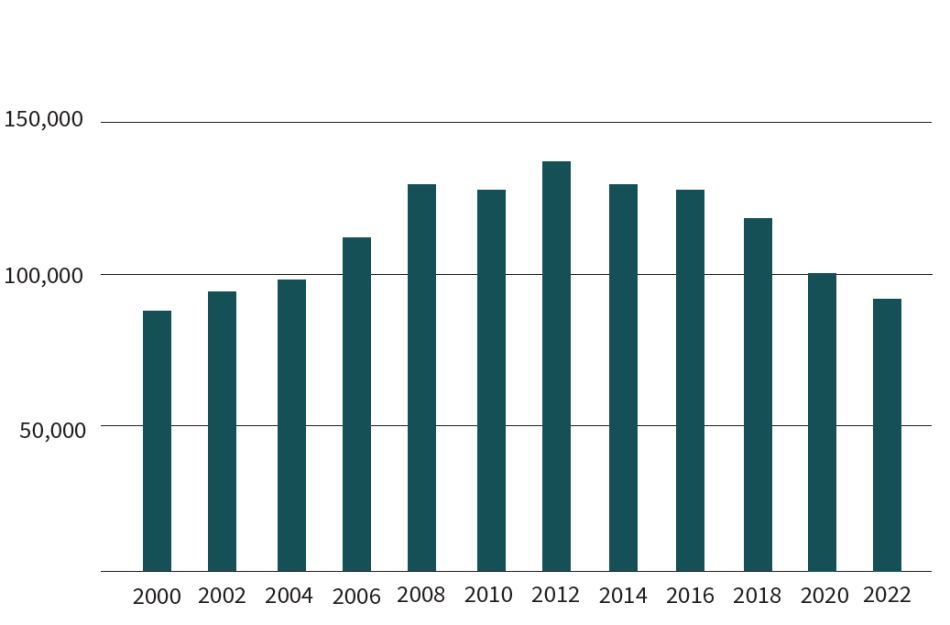* = Growth began at zero.
** = Wisconsin does not have anyone housed at private facilities. However, when a person
is housed out of state under the Interstate Corrections Compact or the Intergovernmental
Agreement, Wisconsin does not track if the facility is a private facility or state or federally owned facility.
*** = The Federal count includes Washington, DC residents convicted of a felony. As of December 31, 2001, DC residents convicted of a felony are the responsibility of the Federal Bureau of Prisons.
Source: Carson, E. A, & Kluckow, R. (2023). Prisoners in 2022 – Statistical Tables. Bureau of Justice Statistics. See Table 4 and Table 14.
The proportion of imprisoned people in private facilities compared to public facilities has not changed considerably in the past 20 years. In 2000, 8% of the imprisoned population was also in private facilities; but fluctuations in the total number of people imprisoned over 20 years have translated to a 5% rise in the number of people serving their sentence in private prisons. Since 2012, however, the population in private prisons has decreased significantly.
FIGURE 1. Percent of Imprisoned People in Private Prisons, 2021

FIGURE 2. Number of People in Private Prisons, 2000-2022

Historically, the largest prison system relying on privatization has been the federal Bureau of Prisons (BOP). Since 2000, the BOP’s reliance on private facilities has decreased by 11%. The number of people in federal custody in its private facilities totaled 13,834 people in 2022. This decrease can be attributed to President Joseph Biden’s executive order to phase out the BOP’s use of private prison beds. A substantial number of people remain incarcerated, though, in these for-profit prisons.
Under the jurisdiction of the U.S. Department of Homeland Security, there is an average of 28,289 people held daily in immigrant detention, and it is estimated 79% of this population is held in privately run facilities.
Political influences have been instrumental in securing the growth of for-profit private prisons. Because the prison population grew in 2022 for the first time in a decade, the privatization debate will likely intensify as opportunities for the prison industry may increase as corporations seek to make profits in related corrections areas.
This post was originally published on this site be sure to check out more of their content.








